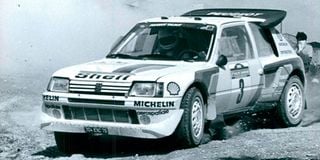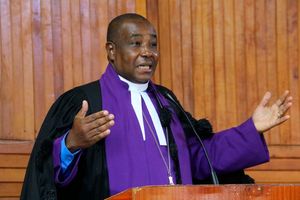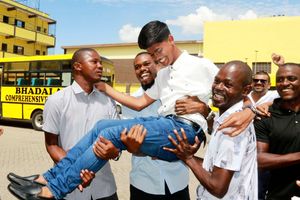Premium
Safari Rally: Story that won’t die

The East African Safari Rally remains one of the defining events of the region.
What you need to know:
- The East African Safari Rally remains one of the defining events of the region.
- A hugely popular East African Rally figure was Kenyan driver Joginder Singh, fondly known as “The Flying Sikh”.
The WRC Safari Rally Kenya flags off today, marking a return to the World Rally Championship calendar after a 19-year absence. It is one of the orphans of the legendary East African Safari Rally, which was born in 1953. The rally was first run between Kenya, Uganda and Tanzania from May 27 to June 1 that year to celebrate the coronation of Britain’s Queen Elizabeth II.
In 1960, it was renamed the East African Safari Rally and ran as such until 1974, when it became the Safari Rally. Then-Idi Amin-ruled Uganda and Tanzania had fallen off in the beginnings of the regional tensions that would eventually collapse the first East African Community in 1977. The Safari Rally’s sibling, the East Africa Safari Classic Rally, was first held in 2003.
The punishing 5,000-kilometre nine-day event will be held in Kenya with, perhaps, its most celebrity-filled driver line-up ever.
The East African Safari Rally remains one of the defining events of the region. Beside the bus and railway services, it was the East African event that most reached the remotest parts of the EAC.
Photographs and accounts from the period tell of whole villages emptying to stand by the roadside to watch the cars whizz by at speeds that wananchi didn’t think was possible. It was a time when cars and motorcycles were still rare in the African countryside, attracting curiosity, and frightening some folk, who fled to the hills to hide from the strange contraption.
Imagine a people to who the fastest thing they had seen was a hare or antelope in the nearby forest fleeing from hunters, and here was a car racing at speeds of nearly 180 kilometres per hour. It was a marvel, but likely also freed local imaginations about how fast the world was moving and the possibilities that lay beyond their villages and small towns.
The end of World War II had seen East Africans who could drive return home, joined in the next decade by the first generation of “native” car drivers and owners. They would speed like crazy on rural roads on days the boss allowed them to make a detour to their villages.
A hugely popular East African Rally figure was Kenyan driver Joginder Singh, fondly known as “The Flying Sikh”. He won the damn thing three times, first in 1965. Accounts of racing history tell of several of these fast drivers being nicknamed Joginder Singh. There is, probably, no East African town where the rally passed where there was no local driver with a death wish, or child, named Joginder.
Multicultural platform
It was also a great East African multicultural platform. Imperfect, yes, but as good as it got then. It mirrored the class and racial politics of the time. Most regional drivers were from European settler stock or the Asian communities. Uganda’s Sospeter Munyegera was the first black East African to complete the rally in 1969.
With the African populations in the countryside drawn to the event in record numbers, it was the only sport that managed that mix of white, brown and black. Nothing else, not even football, came close.
In the rallying food chain, those on the lowest end were the humble tool boys in the service crews. They didn’t service the cars directly; they passed the tools along and packed up. That was the entry point for many black Africans in the motorsport world. Many of them were drawn from local garages, and that is where we get a spin in the wheel.
A country like Uganda had been, during colonialism, and immediately after independence in October 1962, a thinly veiled Protestant-Catholic theocracy. The Catholics were the majority, and they were there or thereabouts. The Protestants were the next-largest, and they had the power. The two shared the spoils, with a Muslim population that was quite marginalised.
Facing discrimination and intolerance in the rural areas, the Muslims gradually drifted to the big and small towns, where they could build mosques and practise more freely. They formed a large proportion of the first generation of black garage owners and pool of commercial drivers. The car trade, and motorsport, thus brought many Muslims in the national mainstream and was, therefore, considerably political in that sense.
Between the capital Kampala and the industrial city of Jinja, there is a vast sugar and tea estate and sugar factory owned by a wealthy Ugandan-Asian family, the Mehtas. On June 20, 1945, a son was born into it. He was named Chandra Shekhar Mehta.
In 1972, the military dictator Amin expelled the Asians from Uganda. Shekhar Mehta and his family settled in Kenya, where he went on to win the Safari Rally a record five times between 1973 and 1982. It many ways, it was partly an act of defiance.
Like the rally, in exile both refused to leave and disappear. So, here we are again.
Mr Onyango-Obbo is a journalist, writer and curator of the Wall of Great Africans. @cobbo3





